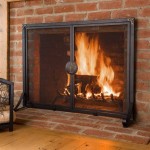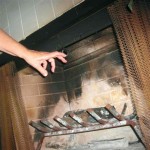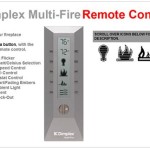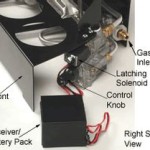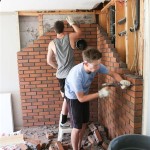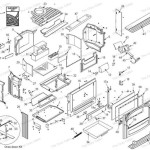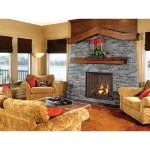How to Install a Wood Burning Fireplace Blower
A wood-burning fireplace blower is a valuable addition to any home with a fireplace. These devices increase the efficiency of the fireplace by circulating the warm air throughout the room, creating a more comfortable and enjoyable environment. Installing a fireplace blower can be a simple and straightforward process, and with the right tools and a bit of patience, it can be accomplished by most homeowners. This article will guide you through the steps involved in installing a wood-burning fireplace blower.
Choosing the Right Blower
The first step in installing a fireplace blower is to select the right model for your needs. There are a variety of blowers available, so it is important to consider factors such as the size and heat output of your fireplace, the size of the room you want to heat, and your budget. Here are some key considerations:
- Size and Heat Output: Match the blower's capacity to the size of your fireplace and the room you want to heat. A larger blower may be necessary for larger fireplaces and rooms.
- Noise Level: Consider the noise level of the blower. Some units are quieter than others, especially important if you have a small room or use the fireplace often.
- Features: Some blowers offer additional features such as adjustable speeds, thermostats, and remote controls. Choose features that best suit your needs and preferences.
- Installation Type: Some blowers are designed for specific fireplace types. Ensure the blower you choose is compatible with your fireplace.
Preparing for Installation
Once you have selected your blower, you need to gather the necessary tools and materials. You will generally need the following:
- Fireplace Blower: The main component of the installation.
- Screwdriver: For securing the blower and mounting brackets.
- Drill: For drilling pilot holes for mounting screws.
- Level: For ensuring the blower is installed level.
- Measuring Tape: For determining the appropriate placement of the blower.
- Safety Glasses: To protect your eyes from debris.
- Gloves: To protect your hands.
Before starting the installation, it is essential to disconnect the power to the fireplace. This will eliminate the risk of electric shock. Also, ensure that the fireplace is cool to the touch before working on it.
Installing the Blower
With the necessary tools and materials ready, you can now begin installing the blower. The specific steps may vary slightly depending on the brand and model of the blower, so it is important to refer to the manufacturer's instructions for detailed guidance. However, the general steps are as follows:
- Locate the Best Position: Determine the best location for the blower based on the size of your fireplace and the desired airflow distribution. Consider factors such as the location of the fireplace insert, the size of the room, and obstructions that may hinder airflow.
- Mount the Blower: Secure the blower to the fireplace using the provided brackets and screws. Use the level to ensure the blower is installed level. Some models come with a built-in mounting bracket, while others require separate brackets.
- Connect the Blower to the Power Source: Connect the blower to a nearby power outlet. Ensure the wiring is properly connected and secured. It is recommended to consult with a qualified electrician if you are unsure about any wiring connections.
- Test the Blower: After installation, turn on the blower and test its operation. Ensure that the blower is functioning correctly and that the air is circulating effectively throughout the room.
It is also important to ensure that the blower is not obstructing any vents or openings in the fireplace. If necessary, adjust the position of the blower to avoid any blockages.
Safety Precautions
The installation and operation of a wood-burning fireplace blower should always be carried out with safety in mind. Here are some important safety precautions to follow:
- Always Disconnect Power: Disconnect the power to the fireplace before working on any of its components. This will prevent the risk of electric shock.
- Use Safety Gear: Wear safety glasses and gloves to protect your eyes and hands from debris and potential injuries.
- Follow Manufacturer's Instructions: Always refer to the manufacturer's instructions for specific installation and operating procedures. These instructions will provide detailed information on safely installing and using the blower.
- Avoid Overheating: Ensure the blower is not placed in a location that could result in overheating or fire hazards. Keep flammable materials away from the blower.
By taking these precautions, you can minimize the risk of accidents or injuries during the installation and use of a wood-burning fireplace blower.

Fireplace Efficiency Blowers And Why You Should Have One

Why Should I Get A Fireplace Blower For My Masonry

How Is A Fireplace Blower Kit Wired Fireplaceblowers Com

How To Replace Your Rsf Fireplace Blower Fan

How To Replace Your Fireplace Blower Do Done

How Does A Fireplace Blower Work Learn About Blowers

Fireplace Blower Fans What You Need For Heat Full Service Chimney

Fireplace Blower Fans What You Need For Heat Full Service Chimney

Fireplace Blowers Explained How Fans Work Regency

How To Install A Wood Burning Fireplace Insert Fireplaces Direct Learning Center
Related Posts

